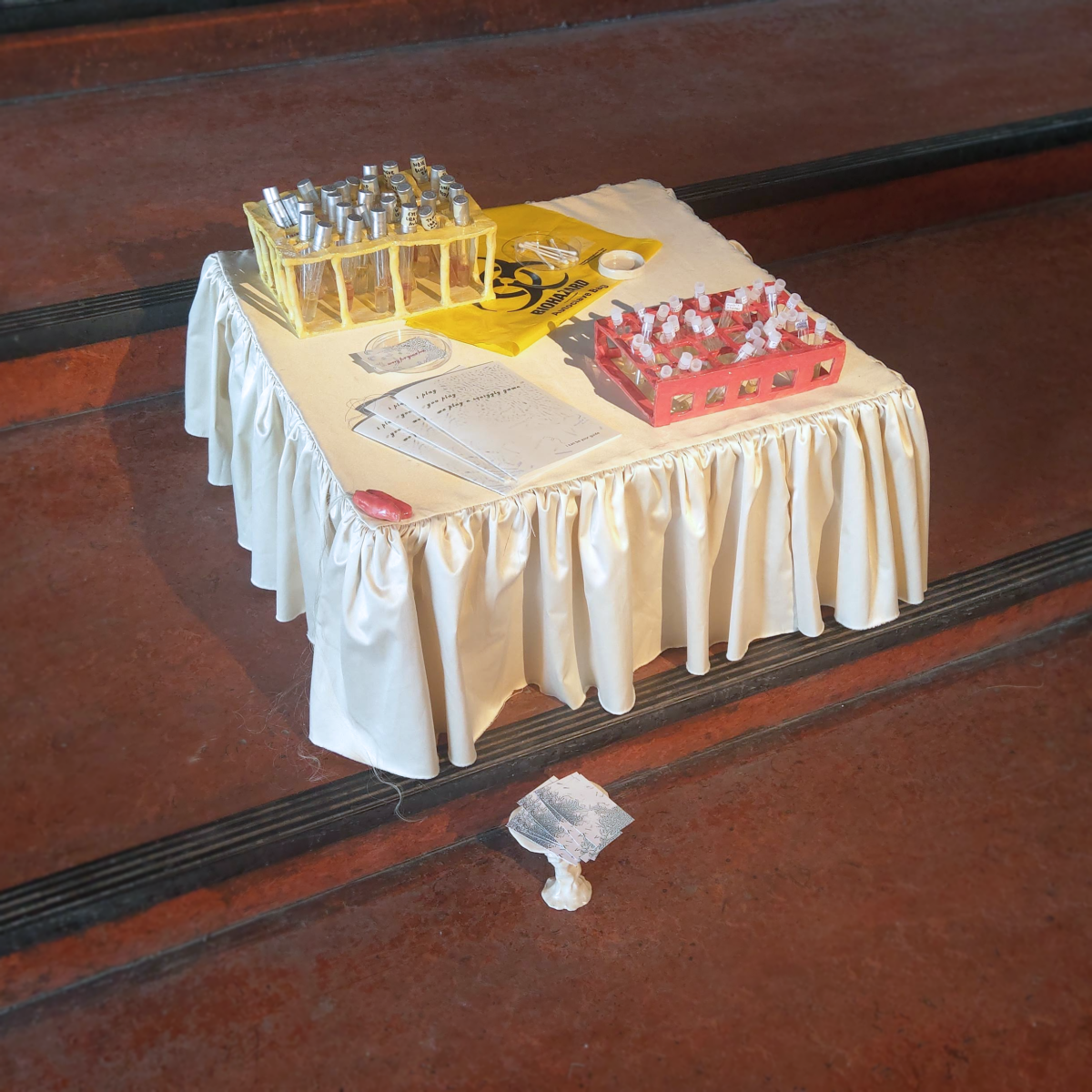MA Artistic Research at the University of Amsterdam & Biobased Art and Design
‘I started this project by questioning the boundaries of bodies through a collaboration with the plurality of beings that make up me. If I research the microbes that are part of me, that are me, that are we, how can “we” create works of art then—together?’
The idea of microbial kinship serves as the point of departure for this project, which cross-pollinates different fields (microbiology, humanities, visual arts) to rethink relations between bodies. In the Material Incubator, Anouk explored the aforementioned topics in a conceptual manner, challenging notions of individuality, contamination, relation, purity, and classification. Practically speaking, this involved setting up a collaborative project with her own microbiome. She used one of the modes of communication that psychoanalyst Donald Winnicott developed for working with children. To breach an imbalance in the capacity for verbal expression between child and analyst, Winnicott came up with The Squiggle Game: a mode of communication that has play as its foundation principle. The game is relatively easy—the analyst leaves a mark (a squiggle) on a piece of paper, and then invites the child to leave their own mark, continuing the drawing however they wish. It is not a set technique with rules and regulations, but one that works through ‘the nature of integration, made possible by the reliance on the human but professional relationship—a form of “holding”.’ (Winnicott, 413)
‘In my best effort, my project is an attempt to communicate in a similar manner with the microorganisms that are part of me—beings I cannot reach through language and verbal communication, but hope to find a form of “holding” them nevertheless. This means we are working together on a large print, leaving marks on each other’s marks, in a petri dish filled with an agar growth medium.’
The process requires us, as researchers, to relinquish a certain control that comes with the presumption of autonomy and individuality, and challenges notions of both authorship and ownership. The practice of ‘zooming in’ draws the work across a range of different times and scales, and constantly confronts us with (problematic) boundaries and distinctions.
Winnicott, Donald W., ‘The Squiggle Game’, in The Collected Works of D. W. Winnicott, Volume 8, 1967-1968, eds. Lesley Caldwell and Helen Taylor Robinson (Oxford University Press, 2016), p.413.
Ongoing project
Educational departments involved:
University of Amsterdam (Artistic Research Masters), The Material Incubator
Credits:
Montserrat Fonseca Llach, Anouk van Wijk
About Anouk van Wijk:
Anouk van Wijk is a visual artist and researcher based in Amsterdam. Sliding through landscapes of eerie spirits, she studies tactile matters, charming critters, and the grotesque. Finding resonance in continuously transforming bodies, she builds intricate sculptural assemblages that teeter on the edge of attraction and repulsion. www.anoukvanwijk.com











